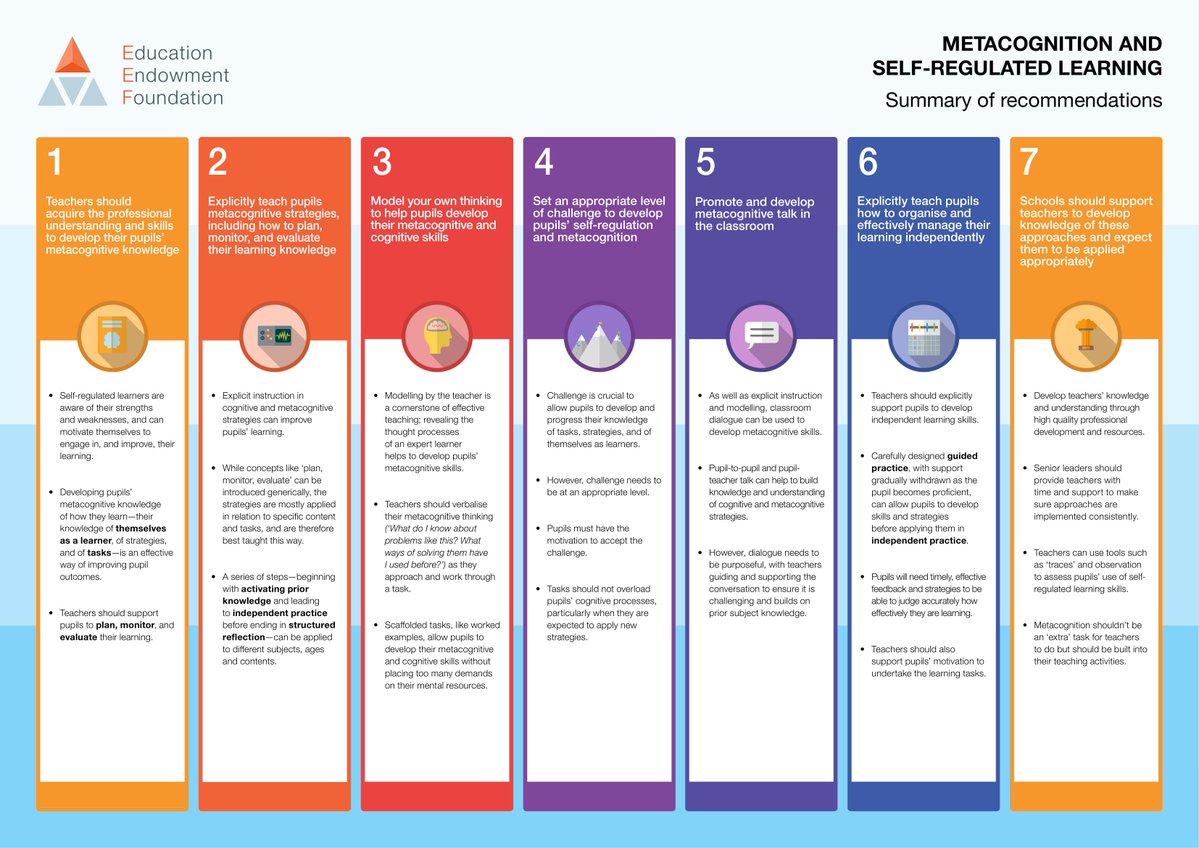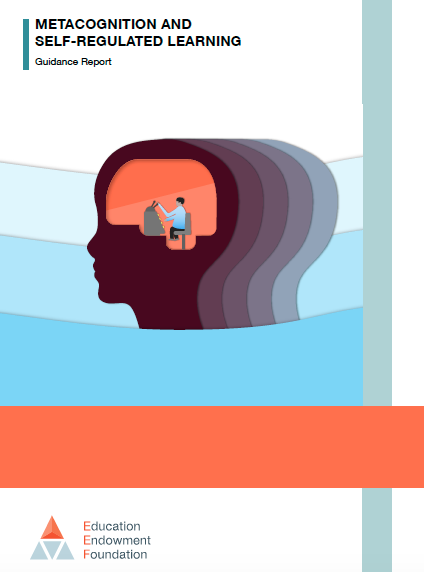In a couple of weeks, year 6 pupils will be sitting down to SATs examinations and in secondary schools, A Level and GCSE exams will start in earnest. Teachers everywhere are concentrating upon supporting our pupils to do their very best in challenging circumstances.
Every teacher knows that the seeds of examination success are sown far in advance of the frenzied exam run-in. Like flowers in bloom, all the hard word is done preparing the ground months, even years, in advance. And yet, we have to grapple with helping pupils learn in the long-term, whilst helping them to make good decisions now – the final weeks before exams – and under the pressure of the exam hall.
Of course, we have to teach the vital knowledge and understanding of our subject domains, but as we do so, we should also train our pupils to better plan, monitorand evaluatetheir own learning, so that when face situations like sitting down and staring at a blank exam paper, they can applytheir learning with success. What proves a timely help for teachers is the well-known, but less well understood concept of: ‘metacognition and self-regulation’.
The ‘metacognition and self-regulation’strand of the EEF-Sutton Trust Teaching and Learning Toolkit has been accessed over 120,000 times. Clearly, there is a hunger to know more about metacognition than the well-used but obviously limited definition of it as ‘thinking about thinking’.
The new EEF ‘Metacognition and Self-regulation Guidance Report’aims to make the research evidence on metacognition accessible and understood, as well as offering solutions to age-old problems like helping our pupils to prepare for exams, along with tackling an array of learning challenges, in the classroom and beyond.
So what is metacognition anyway?
If we take the aforementioned examination season scenario, the guidance offers lots of accessible research evidenceto better guide our practice. It shows how metacognition can helpfully be distilled down to three key steps in all learning:
“It is about planning how to undertake a task, then cognitively undertaking that activity, while monitoring the strategy to check progress, then evaluating the overall success.”
Take a look at this hypothetical example taken from the guidance report of John undertaking a maths question to answer:

If it was as simple as 1-2-3 then every teacher would have it sussed, but there is more to learn and understand if we are to have a properly shared understanding of metcognition in staffrooms and classrooms around the country.
For my students, returning to the weeks ahead, I want them to plan their revision schedule, get organised with resources and prioritise what they revise and when. I want them to monitor their success, revisiting topics, checking their understanding, ‘spacing’ and ‘interleaving’ their study, and asking me if they get stuck. I want them to evaluate whether the knowledge is sticking and deciding if their revision techniques are effective in doing the job. Though I may orchestrate and guide many facets of their revision, real success will be my students self-regulating and taking control of their own learning. As an end goal, at secondary school, I am aiming to support successful independent learning.
Of course, metacognition and self-regulation goes far beyond just examination preparation. The guidance coheres a fuller understanding of the research evidence, covering recommendations about explicit teaching of planning, monitoring and evaluation; teachers modelling their own thinking; setting an appropriate level of challenge; developing metacognitive talk in the classroom, and much more.
Why making sense of metacognition matters
What is so striking about the guidance report findings is that although we know that our pupils will develop strategies to plan, monitor and evaluate their learning naturally, we need to be more explicit in how we teach to develop such crucial metacognitive knowledge and understanding. First, teachers must understand what me mean by metacognition.
The benefits are clear. For disadvantaged learners in particular, this summary of international evidence suggests that ‘metacognition and self-regulation’ as a high impact and low cost approach to improving attainment.
Though I have always known about metacognition (previously a vague understanding in truth), this new guidance helps create a useful platform to understand not just metacognition and self-regulation, but how our pupils best learn.
The recommendations are here:


Useful reading. Getting my students to own their revision and not expect it to be done for them , “Can I have a quote sheet, please?”, is the biggest challenge, especially for lower attaining or confident students.
Yes – a universal problem! I think that a sense of ownership only comes with competence, and so training revision strategies needs to be intertwined with building a deeper knowledge of the domain being tested. How many times have they not competently organised themselves, but it sits on big gaps in their knowledge that they are preoccupied – and sometimes baffled – by.
Develop a few easy-to-remember metacognitive prompts to develop a habit in the students’ post-reading moments.Teach students how to think, solve problems, evaluate evidence, analyze arguments, generate hypotheses.
I agree that metacognition and self-regulation should be taught explicitly and not be expected to occur naturally. Just like teachers like myself who teach procedures for solving complex problems, there should also be a focus on teaching procedures for responding to academic challenges. At my high-school, we have attempted to implement a self-directed learning model where students set goals, take notes on a particular subject, study the notes, in preparation for weekly online assessment. This ideally should all be done independently by the students, but I find that some students get a good grasp of this independent study hall while other students are confused on where or how to begin. I wonder what are the best strategies to teach metacognition and self-regulation to my high-school students in this study hall setting.
The teacher’s daily interaction should be carved in a way that will motivate pupils to take control of their own learning. This will happen if they understand the term metacognition.